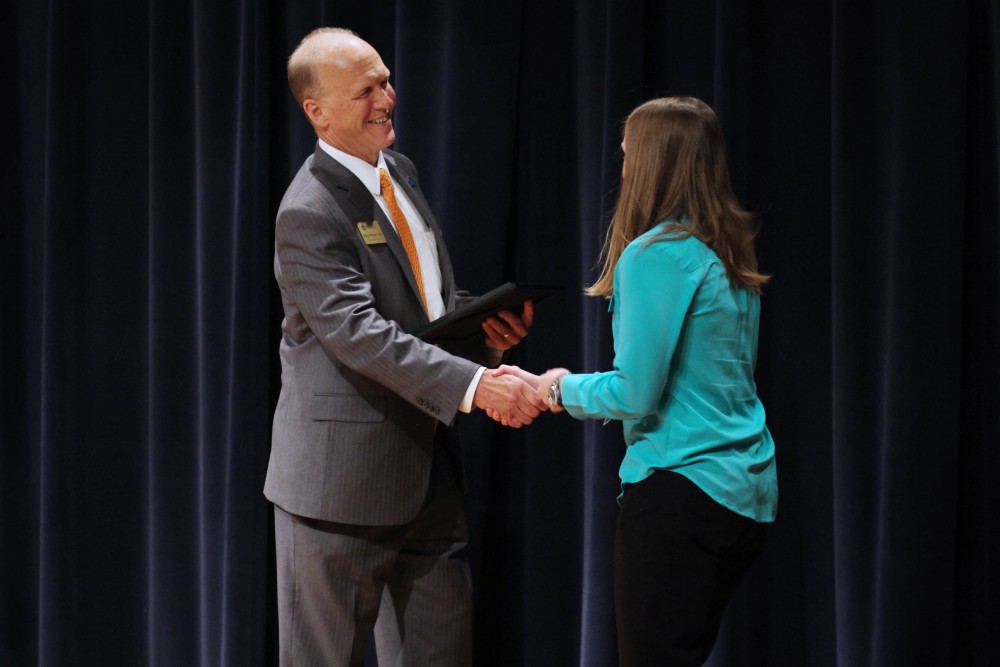Graduate Showcase displays GVSU students’ research work

GVL / Sheila Babbitt Jeffrey Potteiger, Dean of the Graduate School, presents the awards at the Graduate Showcase on April 10th, 2018.
Apr 12, 2018
Grand Valley State University graduate students have been working on a number of research projects over the last year. Several gathered at the DeVos Center Loosemore Auditorium on Tuesday, April 10, to showcase poster presentations of their research during the university’s eighth annual Graduate Showcase.
“Research studies to clinical experience, we are so happy that you have joined us tonight for these accomplishments,” said Maria Cimitile, GVSU provost and executive vice president for academic and student affairs. “Faculty members make this possible from their mentorship and advising, which played a significant role in helping students.”
Some research was focused on the internships that students had experienced. For example, Christina Rinvelt, in the biostatistics graduate program, a professional science master’s degree program, detailed her work with a law enforcement agency.
While there, Rinvelt analyzed surveys from the agency’s previous year. She used surveys to find out if supervisors and graduates were using the most efficient means of training at the agency. The data collected allowed Rinvelt to see which areas were weaker and which were stronger, allowing the agency to learn where they could make improvements.
Other research was centered on experimentation. Spencer Pageau, who is pursuing his master’s degree in health sciences/biomedical sciences, looked at the effects of eicosapentaenoic acid (EPA) on mouse endothelial cell health. The study looked at the way that fatty acids, like EPA, can reduce people’s chances of developing a cardiovascular disease.
Pageau tested to see how EPA would affect different pathways that could influence cardiovascular disease. Ultimately, his research was able to narrow in on how EPA functions and the future of using fatty acids to reduce cardiovascular disease.
Other students presented research on environmental issues. Angela Kujawa, another GVSU graduate student, researched a small animal in Michigan, the American marten. This animal lived in Michigan’s Lower Peninsula, but logging, overharvesting and fires led to its disappearance from the Lower Peninsula in 1911, according to Kujawa’s research.
With help from professors, Kujawa used trapping to place collars on the marten. Then, Kujawa used cameras to try to see where habitable lands were in the Lower Peninsula. The hope of the research is that the northern portion of the southern peninsula of Michigan could serve as a home for martens.
All in all, more than 30 graduate students covered an array of fields of research at the showcase.
“Education of students is vastly important,” said Jeffrey Potteiger, dean of The Graduate School. “GVSU strives to give graduate students a first-class opportunity to engage in a variety of learning environments.”

























